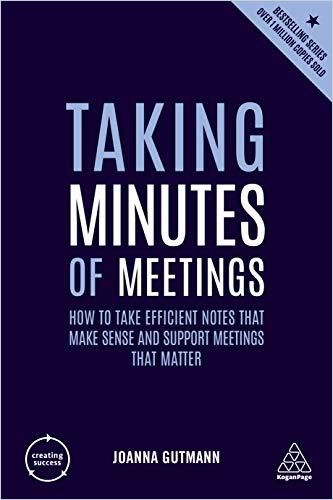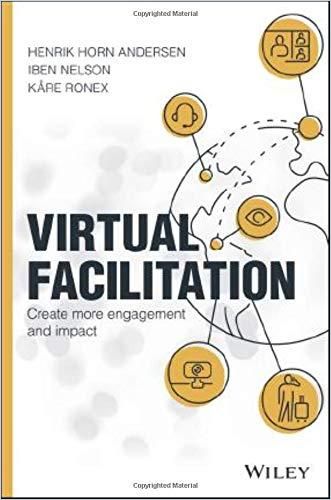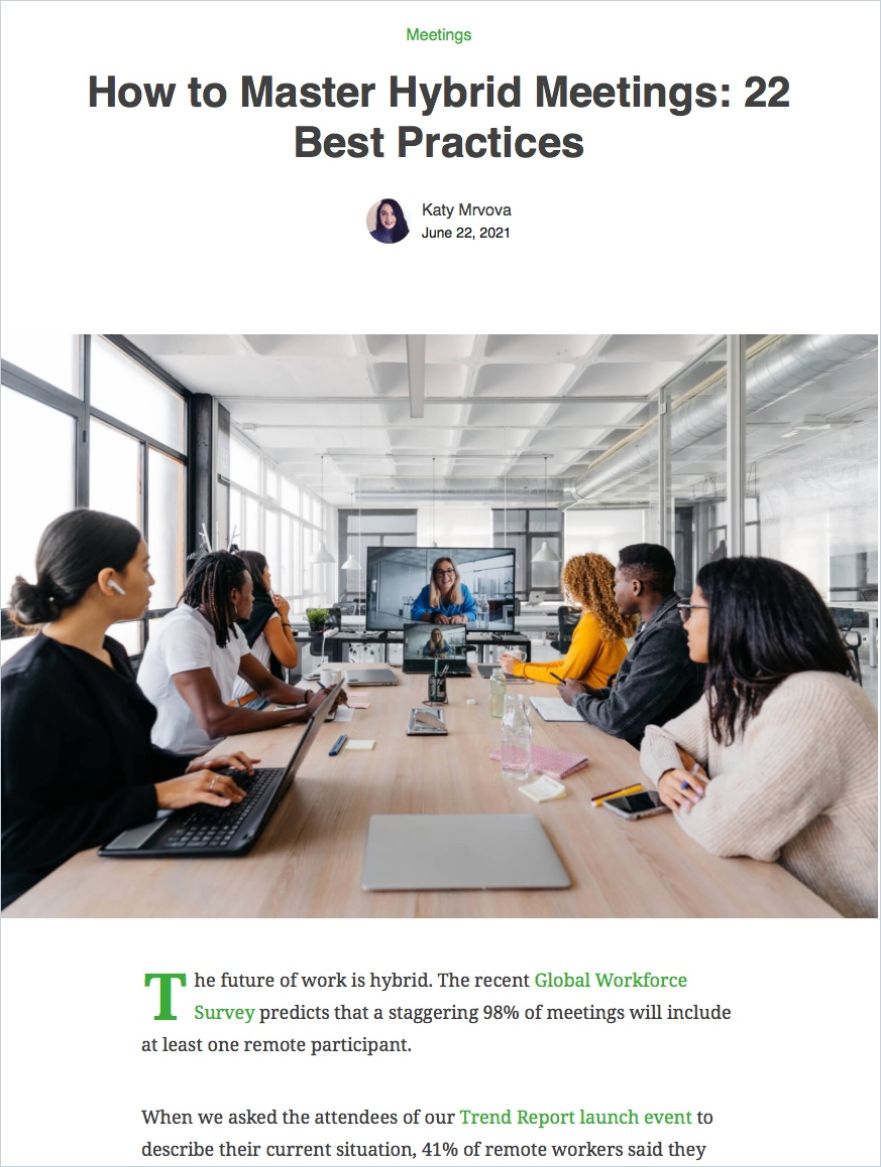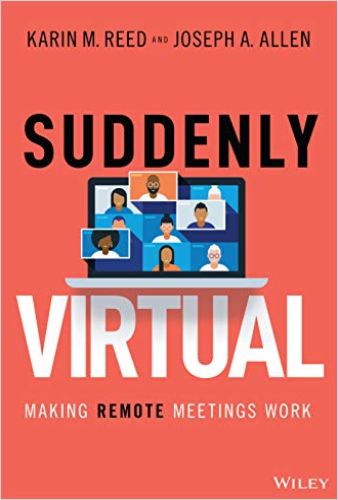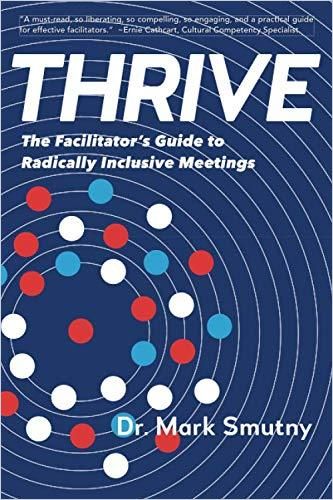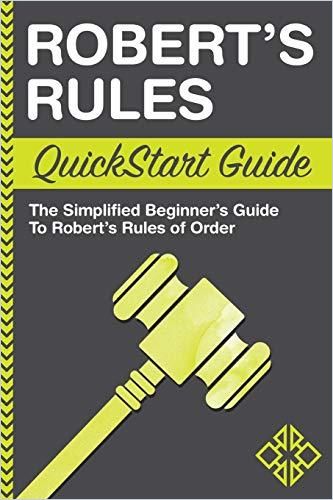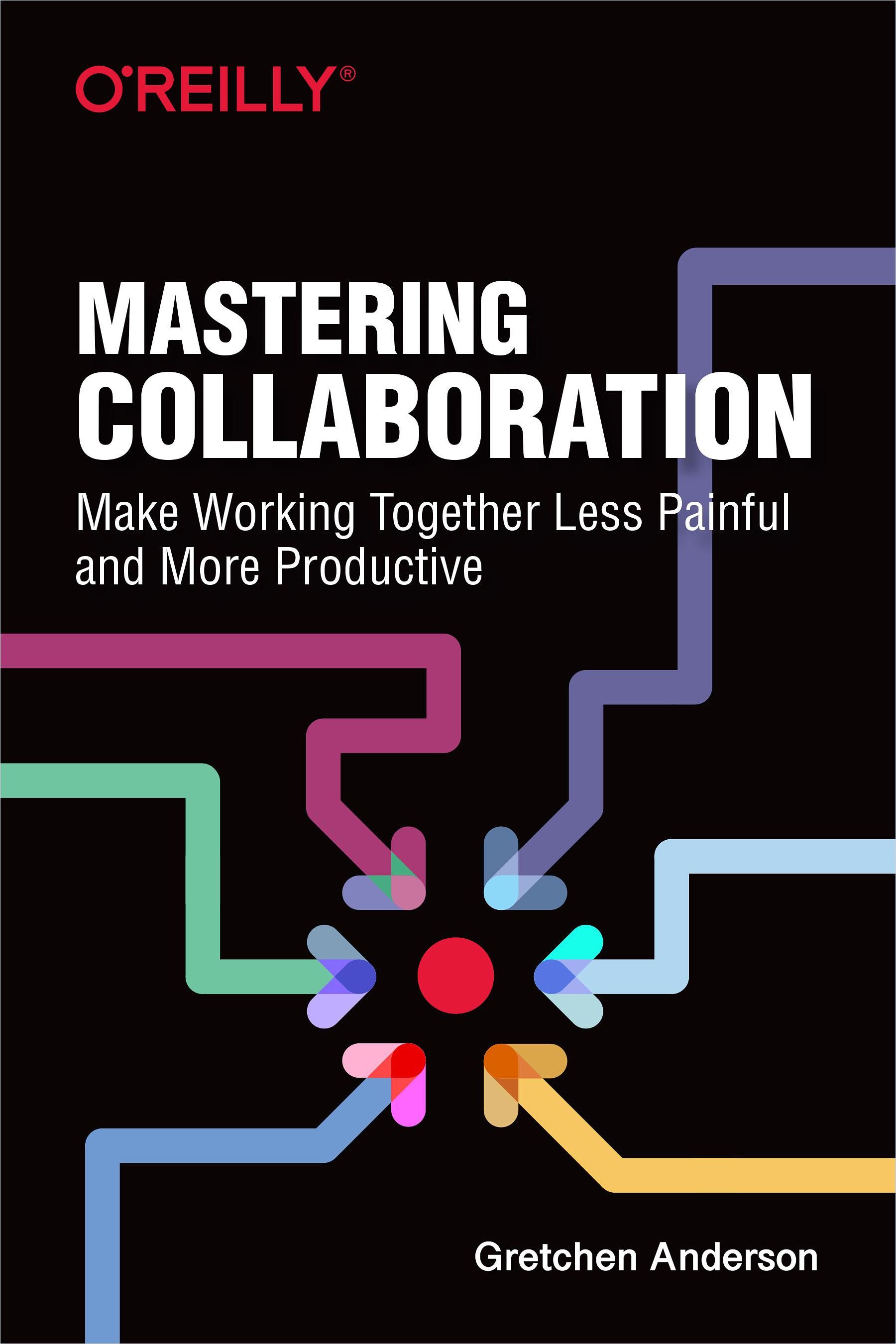How to Run Effective Meetings

If you ask people about the most frustrating part of their job, “attending meetings” will likely be among the most common answers. Many people, however, continue to look at meetings more like a necessary evil than a pain point to be improved upon.
What’s at Stake
Unproductive meetings are more than a nuisance. They directly impact employee engagement and job satisfaction. Following an unproductive meeting, people don’t just check their frustration at the meeting room exit door (virtual or physical). They will waste additional time afterward venting about the meeting with colleagues or ruminating about it on their own. Feeling drained after a meeting puts people in a negative frame of mind that can affect the rest of their workday. Hence, bad meetings impact performance. Research suggests that goal-oriented people (who are generally a company’s high-achievers) are more negatively affected by meeting frustration and the lack of a sense of accomplishment following a meeting than more go-with-the-flow types.
Bad meetings should never be accepted as an organizational norm.
Steven G. Rogelberg
Know Better. Do Better: The Science of Meetings
Although few managers receive training on how to run productive meetings, the science is out there to be put into practice. Yes, “meeting science” is a thing! Organizational psychologist Steven G. Rogelberg brilliantly lays out the findings from academic surveys and experimental studies in his bestseller, The Surprising Science of Meetings.
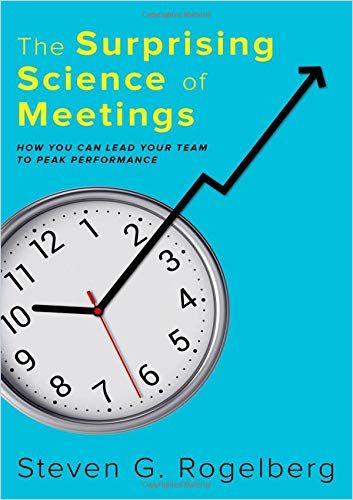
Here are a few action steps you can take to make meetings productive:
1. Adopt a Mind-set of Stewardship
When inviting people to a meeting, you are asking them to give you the most precious resource they have: their time. Or, expressed in the language of dollars and cents, a one-hour team meeting will cost your company hundreds, if not thousands, of dollars. Multiply the average hourly salary by the number of meeting participants, and you will come up with a dollar amount that does not yet reflect lost opportunity costs – time meeting participants could have used to generate value for the company.
If you approach your role as a meeting organizer with the mind-set of being the steward of other people’s time, you automatically become more intentional about the meeting’s purpose and your selection of attendees. As a meeting organizer, also be aware of a common blind spot: Studies cited by Rogelberg show that meeting leaders tend to rate their meetings much more positively than their meeting participants.
2. Craft an Agenda
The mere existence of a written meeting agenda does not yet guarantee a high-quality meeting. Make your meeting agenda as specific and focused as possible. Don’t recycle past agendas, but refresh them every time you meet. Make sure to place important discussion items near the top of your agenda.
Also, you will want to involve meeting participants. Send out an email a few days prior to the meeting to solicit additional agenda inputs.
Finally, feel free to experiment with different formats. Formulating agenda items as questions, for example, is a great way to stimulate thinking and discussion.
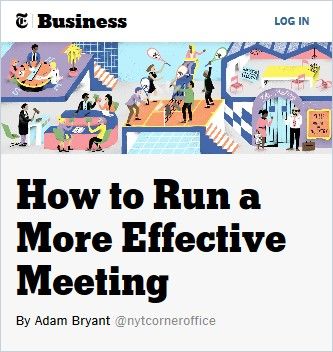
3. Select the Right People
Identify the people who are necessary for the meeting. If you don’t want certain people to feel excluded, invite them but make their attendance optional. Trust people to make their own judgment call as to whether attending the meeting is the best use of their time – or whether listening to a recording at double-speed or reading the meeting notes will suffice.
You may also split your meeting into two parts – a general update part with a larger group of people and a second part for more detailed discussions involving only a few participants.
Make sure everyone in the meeting has a role and knows what that role is. A case in point are decision meetings, as discussed in a recent McKinsey podcast. Some participants will be directly involved in taking the decision. Their role is to reach an agreement. Other participants may have an advisory function. They won’t have the final say in the decision but will be affected by it. Decision meetings may also include experts whose insights can help the deciders reach a better-informed decision. Finally, decision meetings may include some of the people tasked with executing the decision. For example, you will want to invite some of your sales and marketing people when deciding on a new pricing structure to help them understand the reasoning behind the decision and get their buy-in.
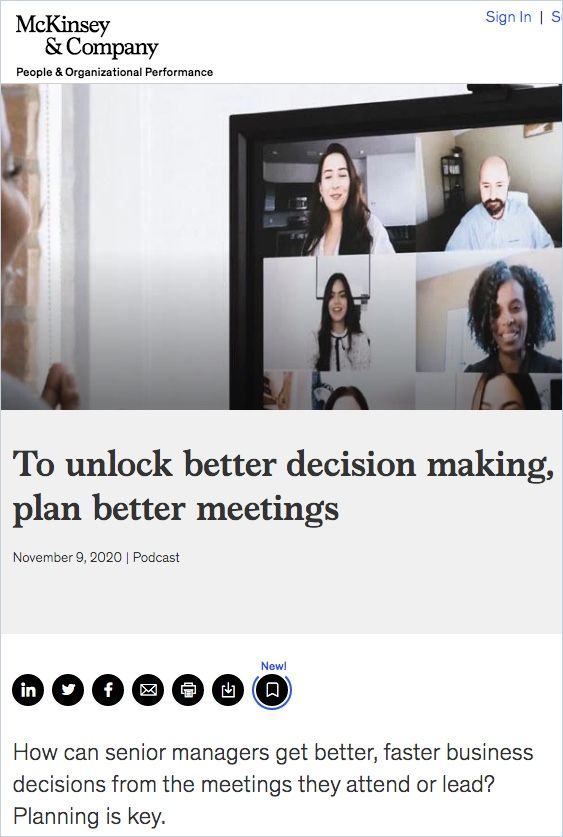
4. Start Off Right
Show respect for other people’s time by starting your meeting on time. You may want to set the mood by playing soothing or upbeat music as people walk into the room, or get everybody centered with a short mindfulness meditation. Using ice breakers is another way to help people settle in. Introduce meeting participants to each other if they haven’t met yet. In hybrid and remote meetings, make sure you acknowledge each attendant by name.

How Check-Ins and Check-Outs Will Help You to Build Stronger Teams
MediumChecking in invites each member to be present, seen and heard. Checking in emphasizes presence, focus and group commitment.
Niklaus Gerber
5. Solicit Everybody’s Participation
Step three involved making sure to only invite people who have something to contribute. In step five, you will want to ensure the meeting benefits from everybody’s contributions. Call on people who haven’t said anything to hear their ideas. Encourage dissent and the voicing of alternative ideas. Use anonymous, app-based polls to see where people really stand. Especially if you have online participants, consider engaging a meeting facilitator who will keep track of how everyone is doing and move the meeting along.
Structure meetings and their settings to encourage inclusion and equal participation. Consider limiting speaking times. Keep discussions focused by “parking” ideas that get the meeting off track.
Skilled facilitators know that asking the right question is the key to unlocking conversation and making meetings thrive.
Mark Smutny
6. Make Silence Work for You
Silent meetings? What sounds like an oxymoron can in fact be very effective. Science suggests that open brainstorming meetings generate fewer ideas than silent brainstorming sessions. Why? Because people’s train of thought gets highjacked by the most compelling idea voiced; or people are reluctant to share an idea that is incompatible with a previously voiced idea praised by the team leader. Indeed, people often reach consensus on less-than-ideal solutions.
If the goal of a meeting is to generate ideas no single person could have come up with on their own, start by having people brainstorm in silence. Subsequently, have people post their inputs on a shared whiteboard where their colleagues can add their comments and build on top of each other’s ideas.
Another way to make silence work for you is by having silent readings. Instead of having people listen to a presentation, have them read a proposal to set the stage for a meaningful discussion.
7. End It Happy
End your meeting on time, and on a positive note. Consider doing a short check-out round where each person takes a turn stating his or her main take-away from the meeting. Distribute meeting notes promptly. They also serve as a reminder for those with follow-up tasks.
Conduct a meeting audit every few months to find out how the meeting can be improved upon – or whether the meeting is still needed at all.
